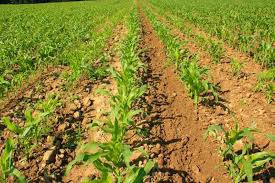
Concrete FloorsPerhaps concrete floors are the most difficult floors to look after and we ought to be thankful that concrete flooring in the modern household is confined mostly to garages and outbuildings. Concrete floors are very porous and tend to soak up all manner of stains like a sponge. In order to make your concrete floor more manageable and easy to maintain you might consider painting or sealing. This is not unnecessarily fastidious as in the long run it may well save you time and money as the cleaning of your garage floor is made easier and you don’t have to spend so much money on detergents and degreasers for the real nasty jobs.
During the windy winter months, make sure that your garage doors stay closed to prevent wind blown debris coming in. Make an effort to clean out your garage at least once a month; before starting on the floor start out by doing a general tidy up, throwing out all the unnecessary stuff that tends to gather and find a home there.
Sweep all loose surface dirt starting from the inside and moving towards the doors, follow through by wetting the floor with water, using a hard surface broom scrub and dislodge some of the grime, you may also use a hose directing it at the floor in quick squirts and using the pressure of the water and broom to remove the dirt. Follow this through by using a commercial degreaser, following the manufacturer’s instructions or the homemade solution we talked about as a general floor cleaner last week. Rinse with clear water and dry the floor.
Cleaning flagstone and slate floors
Flagstone and slate are natural flooring materials which are very similar. When well looked after and polished regularly, these floors have a beauty of their own imparting rich and natural tones to any décor scheme. Flagstone and slate are best sealed using a commercial sealer soon after the floor is laid.
General maintenanceYou may use a self-polishing liquid. There are many brands available at your local supermarket, all do an excellent job but the floors have to be stripped from time to time to remove the wax build up.
Damp mop the floor using a general purpose cleaner, follow this through by mopping the floor with a damp mop and warm water into which half a cup of fabric softener has been added. Wring the mop until it no longer drips and apply to the floor using slow even strokes. If the finished floor has a dull lustre, you may mop it again with a solution of 5 litres of water and one cup white vinegar.
- Chamisa under fire over US$120K donation
- Mavhunga puts DeMbare into Chibuku quarterfinals
- Pension funds bet on Cabora Bassa oilfields
- Councils defy govt fire tender directive
Keep Reading
Linoleum floors
This is easy care and maintenance, and linoleum floors respond very well to regular waxing and in between the waxing floors are swept vacuumed and damp mopped.
General maintenanceA cup of vinegar in the mopping water will not only bring up the shine in your floors but will extend the period between waxing.
Remove heel marks and any indentations on the floor using a fine grade steel wool dipped in liquid wax polish to gently remove the marks and finish off by wiping with a clean damp cloth.
Solvent based cleaning products can soften and damage your linoleum floors as will scouring and flooding the floor with water.
By far the best way to clean your linoleum floor is with a one step cleaner or polish. Dissolve the cleaner/polish in warm water, rinse the floor well and then apply two coats of the self-polishing liquid.
Next week we look at wooden floors and we get some inputs from the experts about how to care for your carpets and when to get professional help.











